Last week, we introduced you to ANICIC – champion of sustainability and newcomer to NYFW. The eponymous label, founded in December 2020, hopes to lead by example via cruelty-free, and anti-exploitation practices.
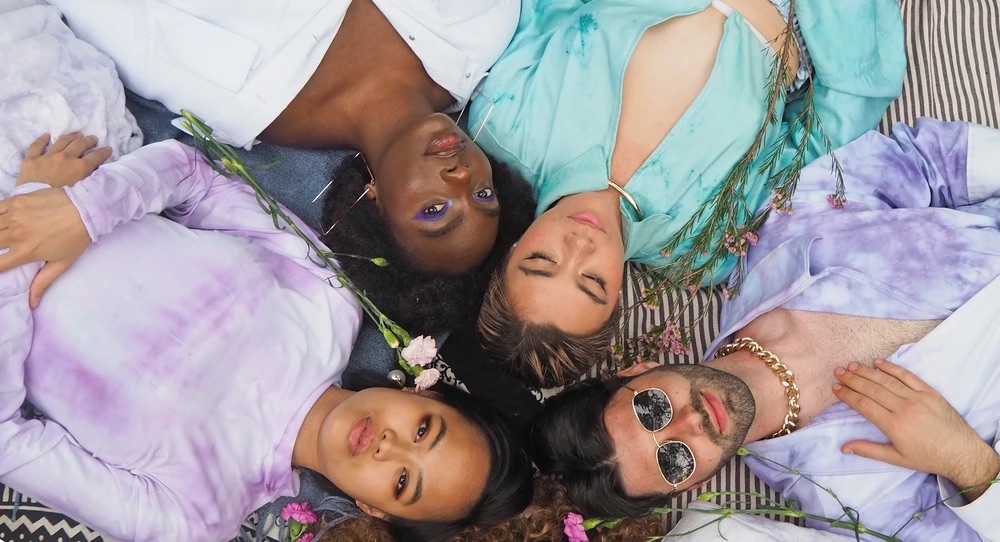
Today, we sit down with ANICIC founder and Creative Director, Anna Anicic to discuss her Fashion Week debut, and what’s coming up next for her primary brand. Check it out below…
Thanks for your time, Anna. It must be an exciting time for you as a designer, in the wake of your ANICIC presentation at NYFW’s “Flying Solo”. How did you make your start in the fashion industry?
I’ve basically been professionally and in [and around] fashion most of my life. I just started in retail and visual merchandising and things like that. I guess that when I saw behind the smoke and mirrors of the industry, as a young person you think that everything’s so beautiful, you know. And glam, and amazing. But then you actually see how things are made and manufactured and it let me into this part of my career.
And you’re referring to the production processes and the way that the clothing is manufactured?
I don’t know how much I can talk about other brands but it’s been in articles and such already, and on TV. So, I worked for this global brand, and during my time that I was working there, it came out that it’s pretty common that a lot of brands burn their stuff that has never seen light or [even] been touched by a person.

Because it’s just cheaper to burn it rather than to keep it on stock [up to 40 tonnes] of clothes. These are clothes which could have been used for something else, you know. It just didn’t make sense in my head. How [companies] which can promote sustainability, also encourage people to donate their old clothes to people in poorer countries, can burn 40 tonnes of new garments. There was such dissonance in me, I just can’t love what I’m doing and at the same time close my eyes to the reality of what is happening to the environment and to people who are manufacturing these things. So, I went into research basically, in fashion and started studying sustainability in the fashion industry and wanted to know everything behind the whole mechanism and how to improve it. And it became a big passion of mine.
So, it has almost catapulted you into a different way of thinking – to think sustainably. I know you really advocate for cruelty-free practices. Does all of this form the grounding behind your decisions as a designer?
Yeah, so I would say, you know, in some ways, starting the brand was almost like a political thing. And then I just happened to have this interest and ability to design and create clothes. So, I almost feel like creativity is my chosen tool to basically try to benefit the world somehow. But the core of the whole idea of the brand is to, basically, the value is to promote a sustainable environment, cruelty-free. Also like, the adversity part of fashion which is pretty bad.
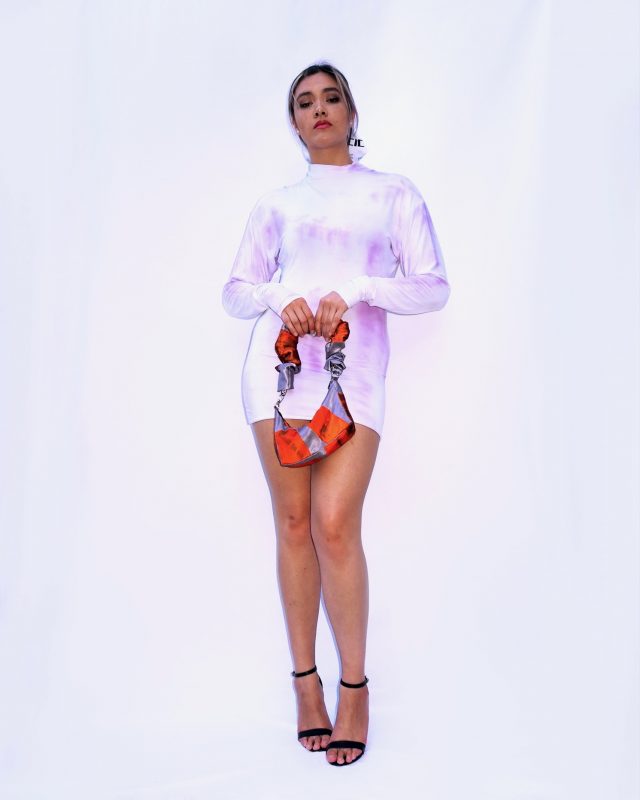
It’s just now, recently, the last two years, maybe, that we’ve seen more plus-sized models on the runway and covers. More ethnic models and just people, in general, in the industry. So I’m just trying to tie all of these things together. Because it also creates a platform for people that are passionate about it. When I work with people, I make sure to work with female photographers, people of colour and other minorities. So that we can work together and collaborate rather than see the industry as competitive or making the most sales and stuff. It’s not even about that it’s just basically changing the way that people think about consumerism and trends and fashion in general.
You’ve just shown ANICIC at ‘Flying Solo’ at New York Fashion Week which is a huge achievement considering you’re at such an early stage. People must be very receptive to your brand’s message…
I think it’s almost like going backwards with the brand, going straight to runway. I think the gap that I saw, people are often [all] “I love sustainable fashion”. But it’s just like, a lot of hemp. It’s not high fashion. And I wanted to show people that it can be high fashion and it can be one hundred per cent sustainably made.
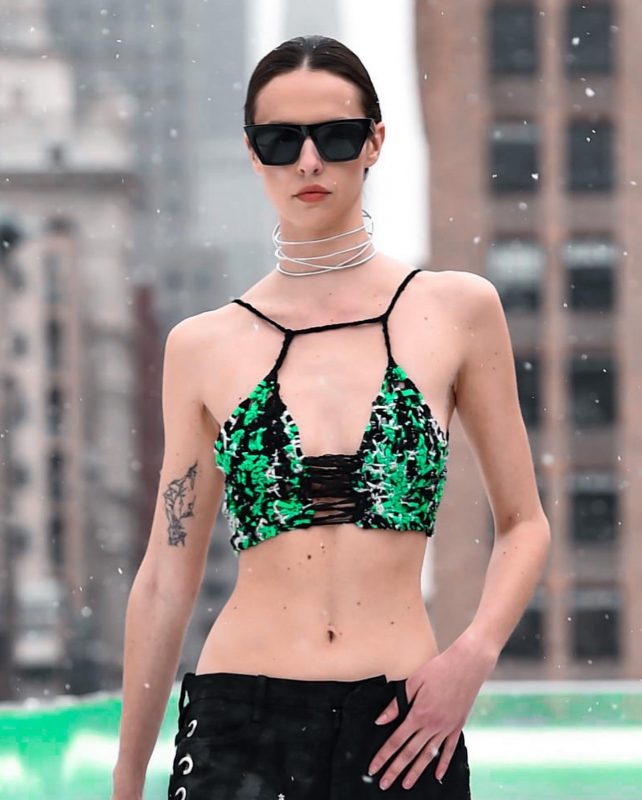
And if I, one person can do it, so can these billion-dollar big brands. There’s just no excuse. And I just wanted to demonstrate that it’s fully possible. And so, it’s kind of a different way of doing it. I just felt like it needed the exposure. I just wanted people to see that it’s possible, basically.
And what was the experience like in New York? How did people receive ANICIC?
They were very excited and that’s one of the things that just makes me so happy. I feel that I’ve gotten so much positive feedback from people that understand [the] importance of the future. Any creator, any designer, any innovator – it’s so crucial at this point in time that we’re all changing ideas and inviting eachother to have these conversations as well. About where we want the future of our world to go, with environmentalism. There’s still just so much going on that you think, “oh, but that was ten years ago”. But it’s still very active. For example, in mainstream fashion, I was still quite shocked to see how much of those old ways are still very dominant in the industry. But I was happy to see that people seem to get the idea and are very excited about it. That’s basically the whole point, is just to connect. And give other people ideas and inspiration.
In terms of your physical process, the clothes are technical and detailed. Do you construct the clothes yourself?
Yes, I make the patterns and then I sew the clothes myself or if I need extra help I have a seamstress here in Sydney that helps me out with that. But most of the hand braided clothes, I basically use scraps from other materials or leftovers of materials [from] when I’ve been making clothes. And then I twine it into new yarn. From there, I make a new shape or new garment. And I feel that it’s also kind of demonstrating the issue, that these are scraps which are [destined for] landfill, [they will] pollute, they will just be trash. But to take that and be able to create something really beautiful and intricate and very unique. Just shows how you view things sometimes and it can just, completely change form. And you know, all processes are different. I try to experiment a lot. For the runway show, a pair of pants – I wanted to make something that was similar to leather without actually using leather. So I used this thick linen, and then I used this wax coating on top of it which gave it this shiny, thicker texture that [reminds] you of leather. But it’s not, it’s just non-toxic and vegan. But it’s just experimenting with different techniques, I guess. And see what happens. It’s always about innovating and viewing things in a new way.
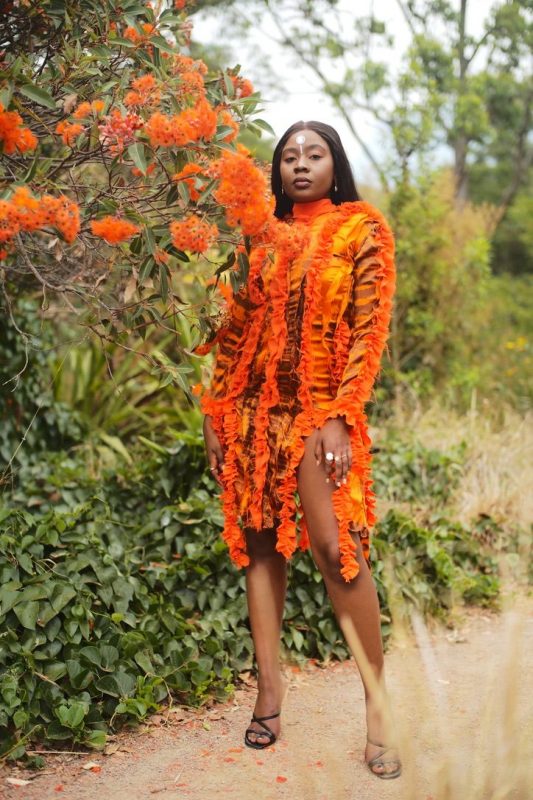
I also love the gender-neutral, non-binary elements of ANICIC. What is your view on gender, in relation to your clothing?
I think in society, it’s so important to have the freedom to [have] both masculine and feminine energy. And I think for anyone, it doesn’t have to do with sexuality or even necessarily your gender. I just think that every single person has both feminine and masculine energy. And I think that then it becomes very restrictive, what you can wear, what you’re allowed to wear, this is this, that is that. It kind of like, restricts people to express themselves as humans and individuals. So I just wanted to open up for, the concept of like, you see something, and you like it. And depending on how you style it, you can get a more masculine look or a feminine look. So, just removing the idea that clothes have a gender or that they have to be even, you know, connected to gender. It can just be, how you choose to express yourself. How you style it. You can style it differently every day, depending on how you feel. And basically, it’s about giving freedom to express yourself.
And what is the imagined backdrop or society which inspired the ANICIC collection, “Dopamine Goth”?
I think, when it comes to ideas and being creative, you know, I take a lot of inspiration from an ideal world that we would live in. An ideal society. And so basically, that’s why I want to have the gender neutrality, the gender freedom, the non-cruelty parts. Because that’s how I see that all businesses would be run in the future. That’s how I see humanity working together rather than against the planet that we live on. So I try to [model it] on that ideal. I also think that ideas come from somewhere, when people also receive ideas it can change how people feel about themselves and how they feel about the external world. So it’s kind of like, I guess you could say I’m just trying to inspire people to think. I guess it’s like a fantasy, kind of Utopian world. But it also doesn’t have to be a fantasy, if that’s what everyone wants.
Your background is Swedish. Do you think that has an impact on your design process or core values?
While I was born and raised in Sweden, I am also a daughter of two immigrants. So, I actually didn’t grow up feeling very tied to my home country or my culture, because of that. So from the start, there was a longing for this kind of like, feeling of being a part of the world more. Rather than to one fixed country or culture or identity. And then I lived in various countries after that, Australia now for the last five years. I feel like all of it affects the designs, because it’s also very inspired by the Australian beach life and summer and heat.
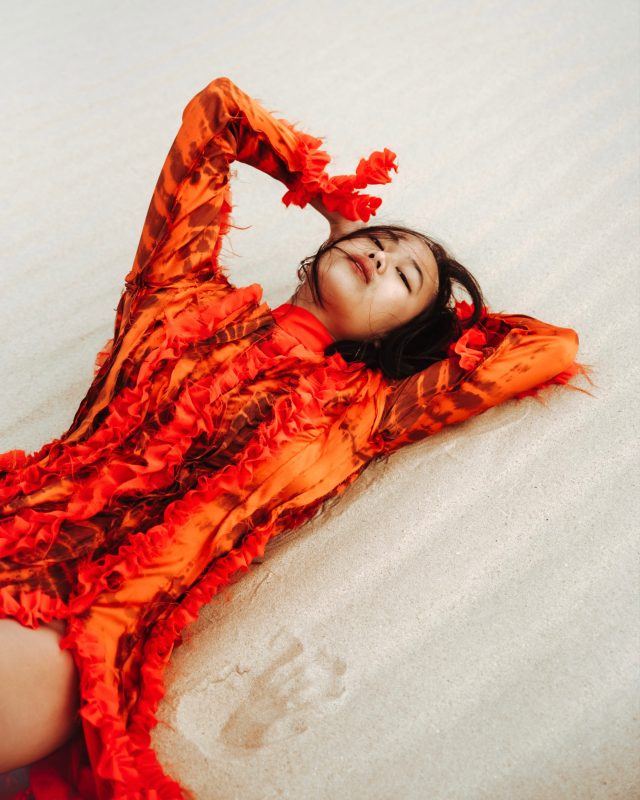
So, it has a lot of those resort elements that you would find down here. But then, I would say that Scandinavian design is also there, and inspiring. It’s hard to explain sometimes, where the ideas come from. But I guess when I grew up there was a longing of belonging to something else. So I guess that’s what comes out in the brand, that you can just be anyone and you’re always a part of it, welcome, and that you’re perfect the way you are.
You apply a lot of techniques throughout your designs. How did you learn all of these different skills? Are you self-taught?
I’m still doing my uni degree, Masters of Design Technology. And, you know, it’s pretty free to choose what you research. And I’ve always been very into sustainability, the last two years. I guess sometimes you just come across different new materials or techniques, or something sparks an idea in you. Or you find something for something else, but then you apply it to clothes instead, if that makes sense.

So I was just researching for a non-toxic dye, a non-toxic colour because I was researching so much about how the dying processing factories in Bangladesh are poisoning the water, just horribly. They say, you know, that you can see what the new season’s colour is if you just look in the rivers, basically. Because it’s just tainted with pigment. So I started researching that and found cold-water dye to buy quite easily. Anyone can basically, just Google and buy it. And I was [thinking], that’s really interesting. How can I make it last longer, how can I make it patterns from it? I started reading into the Japanese shibori technique. Because that’s how they used to dye fabrics thousands of years ago, but in a sustainable way. So I started learning more about that and kind of applied it together, to see what would come out. And there were these really vivid, beautiful colours which looks just as good.
And who are some of your favourite designers? Do you find inspiration from other labels or is it about making something totally new?
I enjoy watching other designers work, especially the very experimental ones like Rick Owens. But I feel that the ones that really stand out, get their stuff from themselves. You can definitely tell which brand is which. You can definitely tell which brand is Rick Owens, for example. I admire their creating process more than, maybe, the actual clothes even. It’s being inspired by people, other creatives, people that think differently, that dress differently. I feel I get inspiration from them. Then I kind of use them as my muses, I think. Like, “would they like this, if I made this for them?”. It’s a bit of everything, I guess.
And what are your plans for ANICIC in future?
It’s kind of hard to take something like this for mass production. And I honestly don’t think that I want to mass produce it because it would just, like, defeat its own purpose. I do want to expand to the point that – because at the moment I’m doing everything, the admin, the shoots, the editing, the social media, the clothes – for the future, I want to be able to focus on the designs and the creative process in a team. Where we work together.
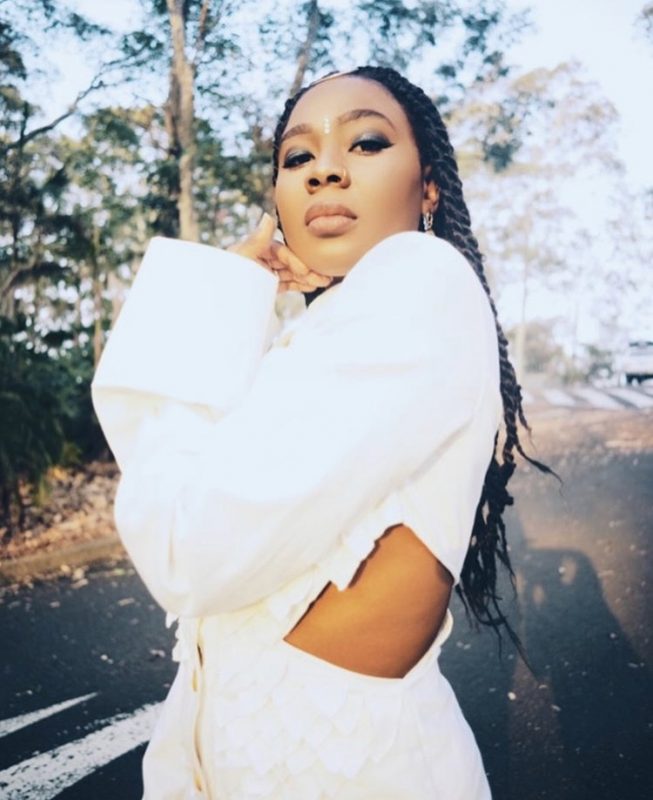
Then I would love to do collaborations with other brands and expand it more that way. Because I think that up to a certain size, this kind of loses its original purpose, or its soul. I want to keep it like, still, every piece is unique. Everything is really handmade. I just don’t want it to be like a machine, that it’s just there to sell or to trick people into buying. I want it to last, I want people to feel like [it’s] something of value, for a long time. So I actually don’t know what’s in the future for ANICIC, but so far so good. I guess we’ll see.
What advice would you give to designers looking to get their names out there?
Think about why you want to do it, why you’re passionate about it, the big picture you would want to achieve. And I would suggest, just trying to do it from the ethical mode, the most ethical way possible. Because even though not everyone is into the environment and sustainability, it is the future and will be required of companies in the future to be thinking [ethically]. So it’s better to just start right away. And don’t be scared of developing your own style, don’t look too much at what you’re doing or compare yourself.
Develop your own style.
Subscribe to FIB’s Weekly Breaking News Report for your weekly dose of music, fashion and pop culture news!







